Traditional Chinese 殭屍 Hanyu Pinyin Hanyu Pinyin | Simplified Chinese 僵尸 Literal meaning stiff corpse Bopomofo ㄐㄧㄤ ㄕ | |
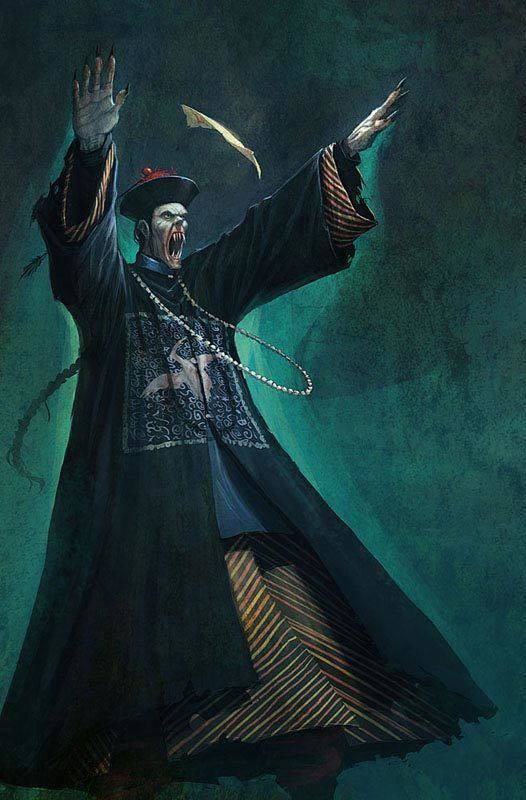 | ||
Jiangshi the undead encyclopedia
A jiangshi, also known as a Chinese "hopping" vampire, ghost, or zombie, is a type of reanimated corpse in Chinese legends and folklore. "Jiangshi" is read goeng-si in Cantonese, cương thi in Vietnamese, gangshi in Korean, and kyonshī in Japanese. It is typically depicted as a stiff corpse dressed in official garments from the Qing Dynasty, and it moves around by hopping, with its arms outstretched. It kills living creatures to absorb their qi, or "life force", usually at night, while in the day, it rests in a coffin or hides in dark places such as caves. Jiangshi legends have inspired a genre of jiangshi films and literature in Hong Kong and East Asia.
Contents
- Jiangshi the undead encyclopedia
- Genesis
- Appearance
- Methods and items used to counter jiangshis
- Origin stories
- In popular culture
- References
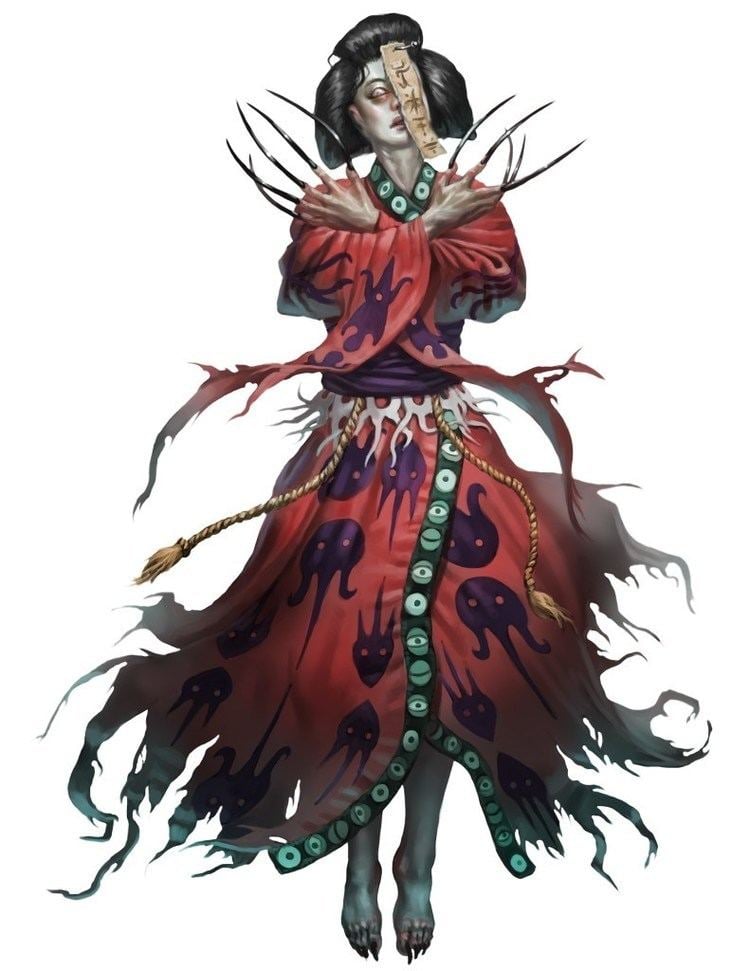
Genesis
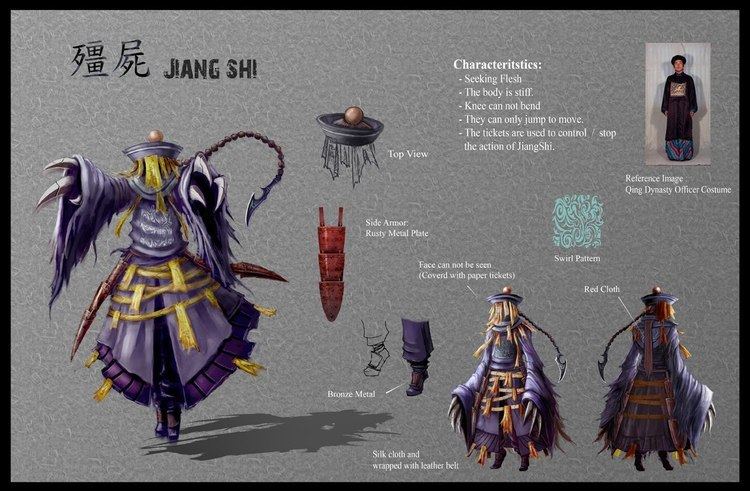
The Qing Dynasty scholar Ji Xiaolan mentioned in his book Yuewei Caotang Biji (閱微草堂筆記) that the causes of a corpse being reanimated can be classified in either of two categories: a recently deceased person returning to life, or a corpse that has been buried for a long time but does not decompose. Some causes are described below:

Appearance
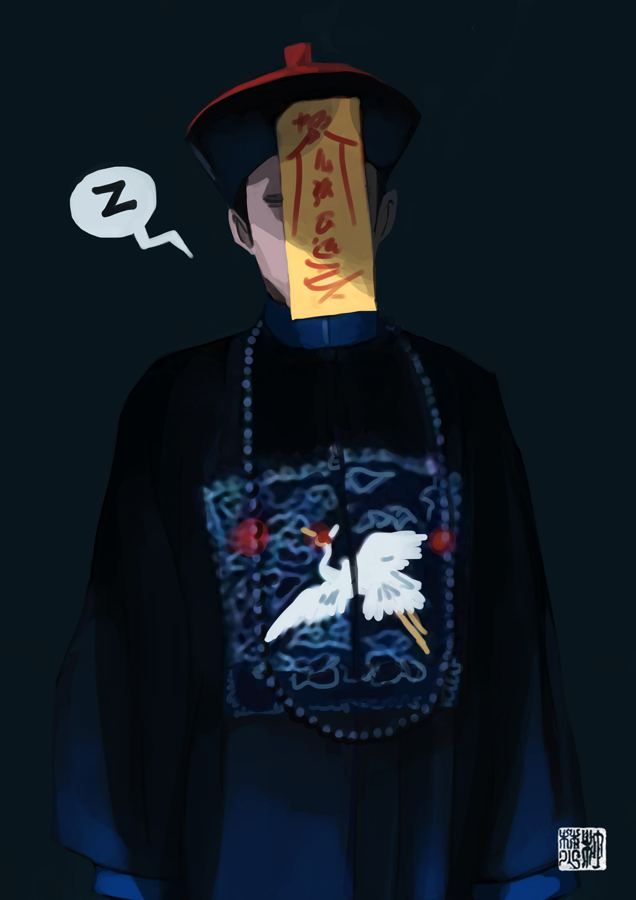
Generally, a jiangshi's appearance can range from unremarkable (as in the case of a recently deceased person) to horrifying (rotting flesh, rigor mortis, as with corpses that have been in a state of decay over a period of time). The Chinese character for "jiang" (僵) in "jiangshi" literally means "hard" or "stiff". It is believed that the jiangshi is so stiff that it cannot bend its limbs and body, so it has to move around by hopping while keeping its arms stretched out for mobility. Jiangshi are depicted in popular culture to have a paper talisman (with a sealing spell) attached onto and hanging off the forehead in portrait orientation, and wear a uniform coat-like robe and round-top tall rimmed hat characteristic of a mandarin (Chinese official from during the Qing dynasty). A peculiar feature is its greenish-white skin; one theory is that this is derived from fungus or mould growing on corpses. It is said to have long white hair all over its head and may behave like animals. The influence of western vampire stories brought the blood-sucking aspect to the Chinese myth in more modern times in combination with the concept of the hungry ghost, though traditionally they feed off solely the qi of a living individual for sustenance and in order to grow more powerful.
Methods and items used to counter jiangshis
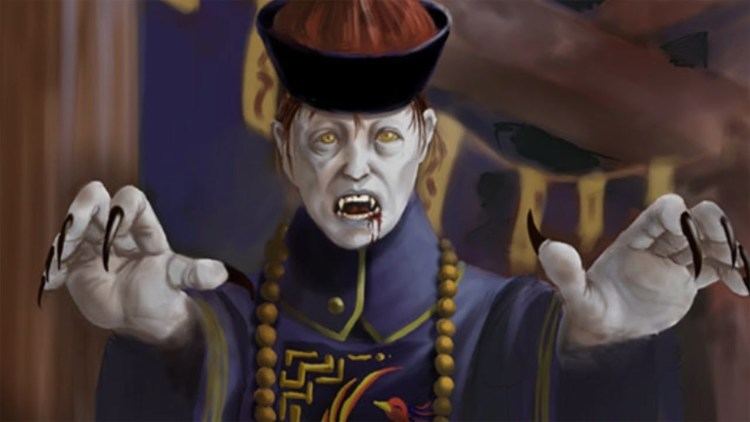
Origin stories
A supposed source of the jiangshi stories came from the folk practice of "transporting a corpse over a thousand li" (simplified Chinese: 千里行尸; traditional Chinese: 千里行屍; pinyin: qiān lǐ xíng shī). The relatives of a person who died far away from home could not afford vehicles to have the deceased person's body transported home for burial, so they would hire a Taoist priest to conduct a ritual to reanimate the dead person and teach him/her to "hop" their way home. The priests would transport the corpses only at night and would ring bells to notify others in the vicinity of their presence because it was considered bad luck for a living person to set eyes upon a jiangshi. This practice, also called Xiangxi ganshi (simplified Chinese: 湘西赶尸; traditional Chinese: 湘西趕屍; pinyin: Xiāngxī gǎn shī; literally: "driving corpses in Xiangxi"), was popular in Xiangxi, where many people left their hometown to work elsewhere. After they died, their bodies were transported back to their hometown because it was believed that their souls would feel homesick if they were buried somewhere unfamiliar to them. The corpses would be arranged upright in single file and be tied to long bamboo rods on the sides, while two men (one at the front and one at the back) would carry the ends of the rods on their shoulders and walk. When the bamboo flexed up and down, the corpses appeared to be "hopping" in unison when viewed from a distance away.
Two oral accounts of transporting corpses are included in Liao Yiwu's The Corpse Walker. One account describes how corpses would be transported by a two-man team. One would carry the corpse on his back with a large robe covering both of them and a mourning mask on top. The other man would walk ahead with a lantern and warn his companion about obstacles ahead of him. The lantern was used as a visual guide for the corpse carrier to follow since they could not see with the robe covering them. It is speculated in the accounts in the book that corpses would be carried at night to avoid contact with people and the cooler air would be more suitable to transporting bodies.
Some speculate that the stories about jiangshi were originally made up by smugglers who disguised their illegal activities as corpse transportation and wanted to scare off law enforcement officers.
In popular culture
Because it usually takes decades for an unattended corpse to become a jiangshi, they are usually depicted wearing attire identified with a previous era, and since many films featuring jiangshi are set in modern China or Hong Kong, the closest "previous era" would be the Qing Dynasty. Their modern visual depiction as horrific Qing officials may have been derived by the anti-Manchu or anti-Qing sentiments of the Han Chinese population during the Qing Dynasty, as the officials were viewed as bloodthirsty creatures with little regard for humanity.
It is also the conventional wisdom of feng shui in Chinese architecture that a threshold (simplified Chinese: 门槛; traditional Chinese: 門檻; pinyin: ménkǎn), a piece of wood approximately 15 cm (6 in) high, be installed along the width of the door at the bottom to prevent a jiangshi from entering the household.
